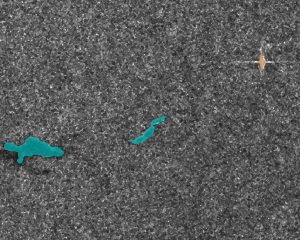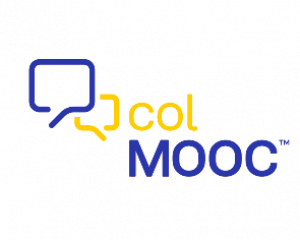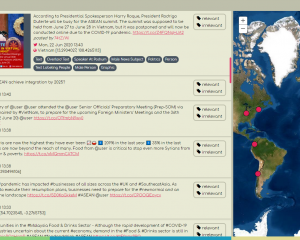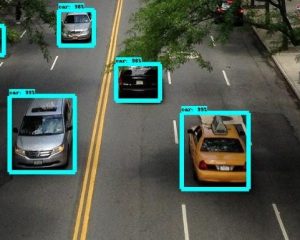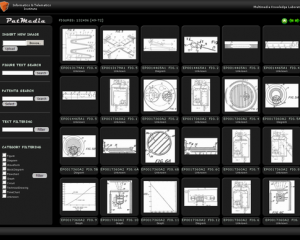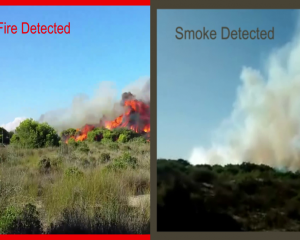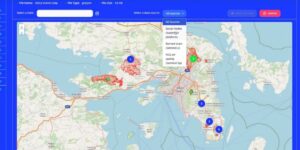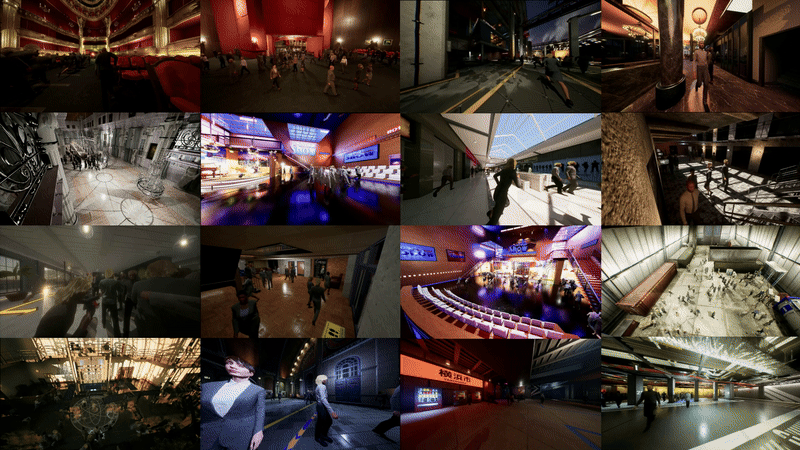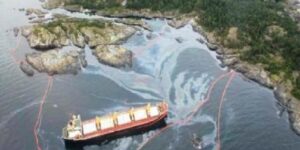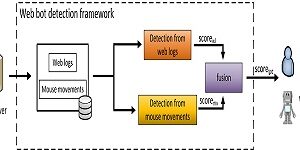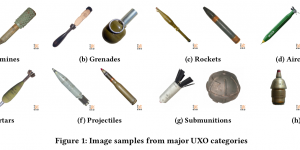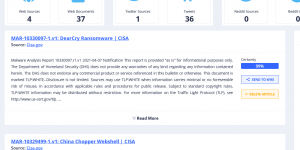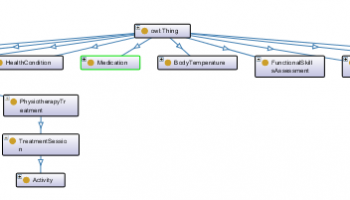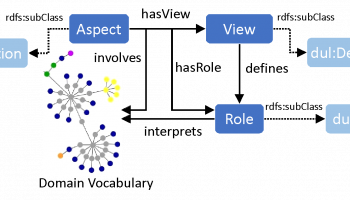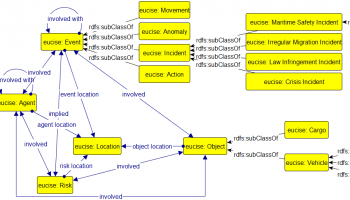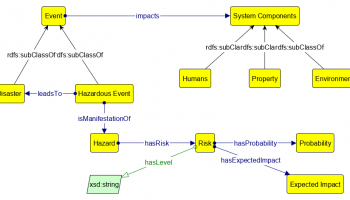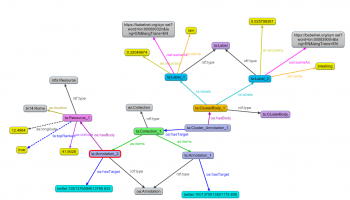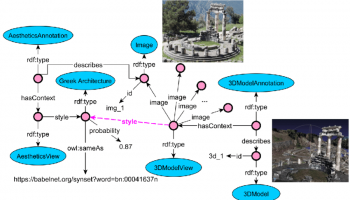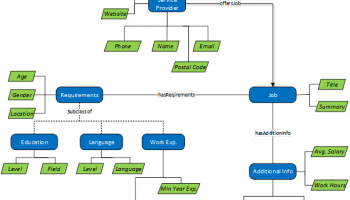Results
SAR Oil Spill Detector
Crowd Analysis Tool
colMOOC - Smart and collaborative learning
VERGE – Interactive Image / Video Retrieval Engine
Social Media Crawler
Object Detection Tool
PatMedia Search Engine
Fire and Smoke Detection
The SAR Oil Spill Detector is a tool deployed by M4D group to identify oil pollution incidents on the sea surface. The developed tool processes SAR image representations and produces annotated masks where detected oil slicks are highlighted accordingly.
Read more…
Read more…
The Crowd Analysis tool aims to recognise violent scenes from crowd-centred visual data, especially video files. The tool has been built on the basis of our recent research work [1] and its model architecture is based on deep learning methods and in particular on a 3D-Convolutional Neural Network (CNN) ResNet with 50 layers [2] that has been trained using appropriate video footage [3] that includes crowd violence scenes.
Read more…
Read more…
The colMOOC objective is to promote learners’ interaction in MOOC courses by presenting an innovative conversational agent that supports students’ constructive dialogue.
Read more…
Read more…
VERGE is a hybrid interactive video/ image retrieval system, which is capable of searching into video/ image content by integrating different search modules that employ visual and textual-based techniques.
Read more…
Read more…
The Social Media Crawler is a tool that aims at timely social media monitoring by collecting and analyzing social media posts, in particular from Twitter, for topics of interest.
Read more…
Read more…
The Object Detection Tool focuses on recognizing objects (e.g., cars, boats etc.) from visual content captured from various optical sources/sensors such as cameras mounted on UAVs, CCTVs etc.
Read more…
Read more…
PatMedia is a Hybrid Retrieval Engine for patent multimedia content developed by the Multimedia Knowledge Laboratory at the Informatics and Telematics Institute.
Read more…
Read more…
The Fire and Smoke Detection tool aims to recognise automatically the presence of fire and smoke textures in visual content. Visual input can be provided in the form of images or videos for on-demand analysis, but the tool can also process video streams to support online monitoring of an area.
Read more…
Read more…
Wildfire Dataset from Satellite and Social Media Sources
PSCS-I Dataset
LADOS Dataset
Cylinders Dataset
Web Bot Detection Dataset
UXORD-10k Dataset
Oil Spill Detection Dataset
CTI-classification-dataset
Urban-indoor-outdoor-sentiment-analysis-dataset
The Wildfire dataset is a High-Value Dataset used in the Attica pilot, containing enriched metadata derived from geolocated social media posts, predicted fire danger levels, burned area scars, and Sentinel satellite data. These data products have been processed and managed using tools and functionalities provided by the BeOpen Framework, which serves as the backbone for data integration, management, and analysis.
Read more…
Read more…
The PSCS-I dataset contains a large-scale collection of videos and high-quality annotations that can support crowd analysis-related tasks, including 647 videos—312 directly rendered in UE5 and 335 photorealism-enhanced videos post-processed through the state-of-the-art image-to-image translation method, EPE.
Read more…
Read more…
LADOS contains 3388 RGB images gathered from online sources, including six classes “Oil”, “Emulsion”, “Sheen”, “Ship”, “Oil-platform”, and “Background” related to oil spill incidents of inland, coastal, and offshore water surfaces.
Read more…
Read more…
CylinDeRS, a comprehensive dataset of 7060 images, with a total of 25,269 gas cylinder object instances, explicitly designed for gas cylinder detection and the classification of their key attributes (material, size, and orientation) in real-world scenes.
Read more…
Read more…
Αutomated programs (bots) are responsible for a large percentage of website traffic. These bots, called web bots, vary in sophistication based on their purpose, ranging from simple automated scripts to advanced web bots that have a browser fingerprint, support the main browser functionalities, and exhibit a humanlike behaviour. Advanced web bots are especially appealing to malicious web bot creators, due to their browserlike fingerprint and humanlike behaviour that reduce their detectability.
Read more…
Read more…
Unexploded Ordnance (UXO) classification is a challenging task which is currently tackled using electromagnetic induction devices that are expensive and may require physical presence in potentially hazardous environments. Our work aims to support research for image-based UXO classification with the curation of UXORD-10K, a dataset of over 10.000 annotated images shared across 8 major UXO categories.
Read more…
Read more…
Oil Spill Detection Dataset contains jpg images extracted from satellite Synthetic Aperture Radar (SAR) data depicting oil spills and other relevant instances, as well as their corresponding ground truth masks. Initial SAR data were collected from the European Space Agency (ESA) database, the Copernicus Open Access Hub acquired via the Sentinel-1 European Satellite missions.
Read more…
Read more…
Cyber Threat Intelligence (CTI) information corresponding to evidence-based knowledge about potential cyber threats that can be used to inform decisions regarding the response to them can be found in online sources.
Read more…
Read more…
The Indoor/Outdoor Sentiment Analysis Dataset contains images from the height of human vision as proposed by architects in an effort towards estimating the way human emotion is triggered by urban architectural places.”
Read more…
Read more…
REA Ontology: Modelling patient profiles and dialogues in Ambient Assisted Living
KRISTINA Ontology: Modelling topic hierarchies and behavioural patterns in conversational agents
The ARESIBO Ontology for situational awareness in border security
The Crisis Management Ontology of BEAWARE
INGENIOUS Ontology: Risk and disaster management to assist First Responders
EOPEN Ontology: Annotation model for social media and change detection
V4Design Ontology: Representation and Interlinking of Digital Content in Creative Industries
MIICT Ontology: Modelling migrant integration services and profiles
The TOSCA-S Ontology: A Pattern-based Semantic Lifting of TOSCA
This ontology supports the representation of different aspects of a patient’s profile, including human-related observations (cameras and sensors), as well as dialogue-related information, such as topics, history and notifications.
Read more…
This ontology supports knowledge integration, reasoning and fusion in conversational agents, coupling information distilled from the interaction with the user with domain and background information.
Read more…
The ARESIBO ontology focuses on integrating and enriching data from multimodal sources with contextual information at semantic level in the scope of border surveillance operations. It relies heavily on the EUCISE-OWL as well as geospatial related ontologies.
Read more…
The beAWARE ontology is an “all-around” lightweight crisis management ontology for climate-related natural disasters, allowing first responders and relevant authorities to plan and coordinate the most effective responses.
Read more…
The INGENIOUS ontology focuses on the modelling of the disaster, the wearable toolkits and their sensors, and information about the status of the First Responders, fostering advanced situational awareness and decision making capabilities in disaster management.
Read more…
Conceptual models for the representation and semantic interlinking of information in Earth Observation systems, such as meteorological and climate information, as well as for infusing non-Earth Observation information, such as social media.
Read more…
Ontological patterns for semantically representing, aggregating, linking and combining annotations coming from visual and textual analysis of digital content.
Read more…
Semantic models for annotating ICT-enabled services for providing a series of sustained and improved inclusion services that capture the specifics of socio-cultural, economic and legal contexts of migrants in the destination country..
Read more…
The SODALITE ontology provides abstractions for applications and infrastructures that belong to the Cloud Computing, HPC or Edge Computing domain. The ontology is based on the TOSCA standard, an OASIS language to describe a topology of cloud based web services, their components, relationships, and the processes that manage them.
Read more…

